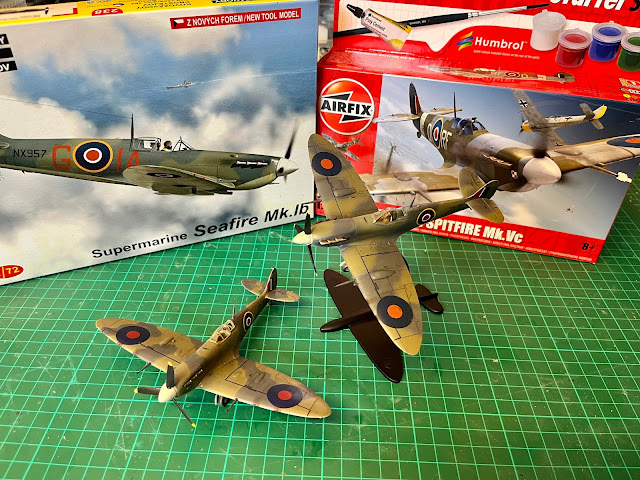Built side by side with my Airfix Coastal Command Beaufighter that I shared yesterday, this is the Hobby 2000 (Hasegawa) kit of the Beaufighter VIF finished in the colours of 307 Squadron, Polish nightfigher unit in 1942. Between April 1941 - 1943 the squadron was based at RAF Clyst Honiton, now Exeter Airport, defending the SW England from enemy night bombers.
From a model building view, this was one of the best quality 1:72 kits I’ve built and that’s saying something!
I struck on building this aircraft after pausing at a memorial to two nightfighter pilots overlooking Beer beach. This remembers the night of 12th April 1942, when Beer Coastguards saw an aircraft crash into the sea one mile south of Beer Head. The aircraft was a Bristol Beaufighter IIF from 307 Squadron, based at RAF Exeter, operating in the nightfighter role, patrolling Lyme Bay to intercept German bombers which passed through this area en route to targets such as Bristol, Cardiff and Liverpool.
In response to the crash 2 Beer fishermen took their boat to look for survivors, but found only small pieces of wreckage. Both members of the crew were killed in the crash. The body of the observer, Flying Officer Mieczyslaw Swierz, was recovered from the sea by an RAF rescue launch from Lyme Regis. The body of the pilot, Squadron Leader Roman Smok, was never found.
The Beaufighter being flown on 12 April was the rarer and less reliable Merlin engined Mk.IIF introduced late in 1941 when the Short Stirling bomber programme was given a higher priority for the Hercules engine. The squadron re-equipped with the improved Beaufighter Mk VIF in May 1942 and it is this aircraft I have recreated in my model.
In total, Beaufighter crews shot down 15 enemy bombers with three probables and 6 damaged; the last victory was the shooting down of a Do 217 on 24/25 September 1942.
On 15 November 2019, the Polish 307 nightfighter squadron was honoured for defending the British city of Exeter from a German blitz campaign during the second World War. A Polish flag fluttered over the city honouring the pilots who prevented the destruction of Exeter in the 1942 Luftwaffe attack.


























